I've been working to automate a household appliance. The device is normally controlled by a switch that must constantly be depressed in order for the device to operate. Instead, I replaced this switch with an NPN transistor that I control via an arduino.
The diagram below shows my setup. The motor circuit refers to the appliance control circuit which includes its own battery and charging circuit. I simply removed the switch from this circuit and connected the leads to my control circuit.
In my first attempt, I ran into issues with transients, but I was able to address this by adding the ground. However, on this third time building the circuit, I am running into transient issues again. As before, when the arduino digital pin is set to high, the device is properly activated. However, when it is set to low, the device does not completely turn off.
Is it possible that this is an issue with the appliance control circuit? How can I make this circuit more robust to transient currents?
